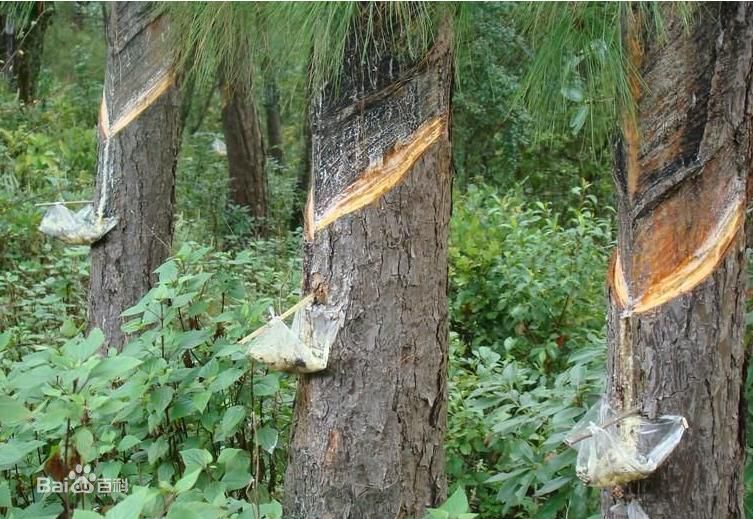QQ:191057728
Skype:kindy1128
Contact: 0796-8107283
Mobile: +86-18770412704
Email:kindy1128@163.com
Whatsapp:+86-18770412704
To address:137 Chengchengnan Industrial
Zone, Jishui County, Ji 'an City,
Jiangxi Province,China
QQ:191057728
Skype:kindy1128
Contact: 0796-8107283
Mobile: +86-18770412704
Email:kindy1128@163.com
Whatsapp:+86-18770412704
To address:137 Chengchengnan Industrial
Zone, Jishui County, Ji 'an City,
Jiangxi Province,China
Turpentine is the resin secreted by pine trees. When it first flows out of the trunk, it is colorless and transparent, and the turpentine content can reach more than 30%. After contacting with the air, the turpentine gradually volatilizes, plus the intrusion of external water, so that part of the resin acid precipitates out in a crystalline state, and the turpentine gradually becomes a honey-like semi-fluid. Resin is mainly composed of resin acids and terpene hydrocarbons, but also contains a small amount of impurities and water. The contents of resin acids and terpene hydrocarbons vary with tree species, place of origin, extraction method and storage period. Masson pine resin is generally composed of: rosin 72-75%, turpentine 16-20%, water 4--6%, impurity 0.05 -- 0.3%.
The main countries producing lipid rosin are Russia (annual output of 200,000 tons or so), Portugal (100,000 tons or so), Mexico and India. Chemical lipid extraction is widely used abroad with high labor productivity. The United States is the first to use skin-cutting sulfuric acid to stimulate lipid extraction (pre-cutting intensity lipid extraction). The annual output of pine per plant is 6kg, and each worker produces 20 tons of pine per year. In the Soviet Union, sulphite alcohol mash was mainly used to stimulate lipid extraction, which could reach 5 tons per person per year. Portugal promotes narrow cut surface chemical lipid extraction, with sulfuric acid black paste as stimulant, with an annual output of 2 kg of pine resin per plant. The annual consumption of world rosin has been maintained at about 1.1 million tons for a long time. As the raw materials of floating Pinus tabulaeformis and wood rosin are increasingly short, there is a tendency to rely on fat rosin to meet the needs.
